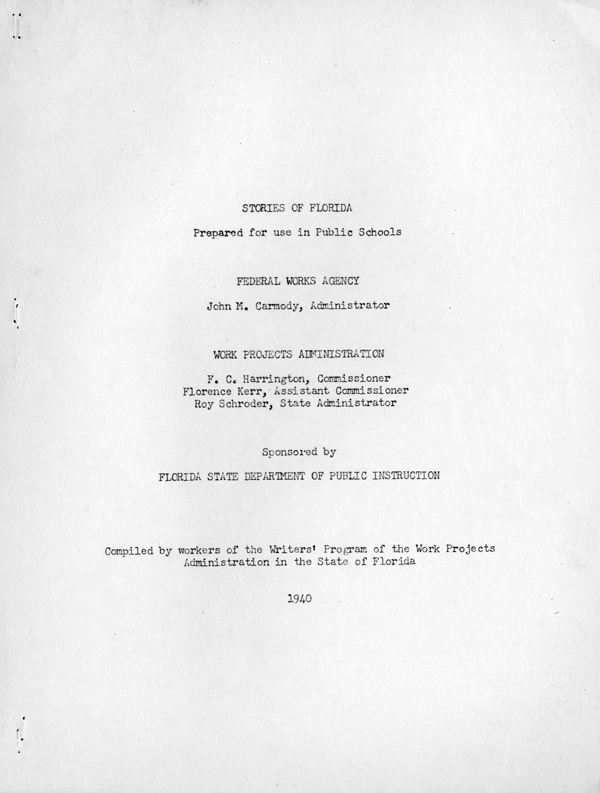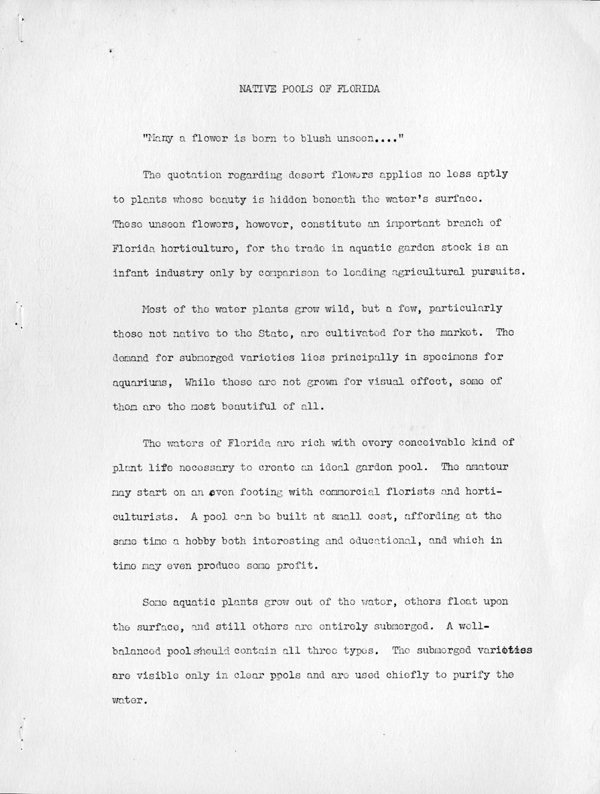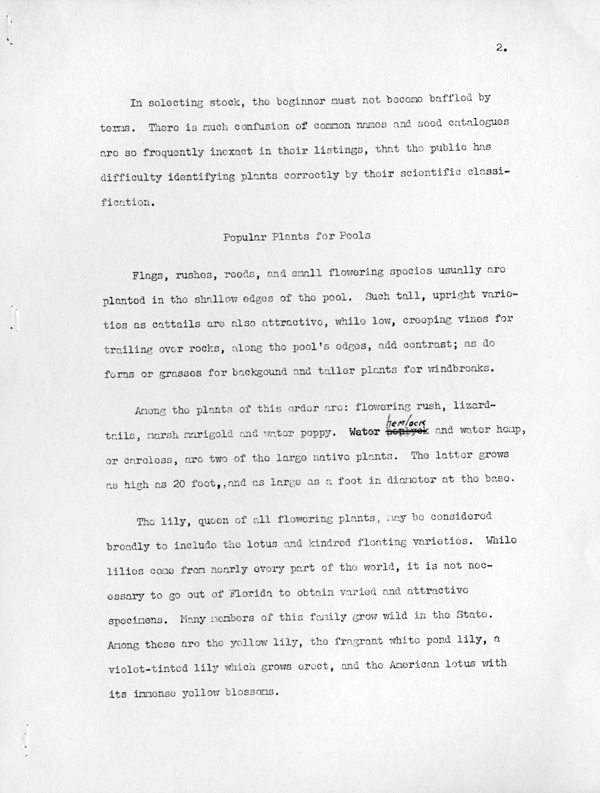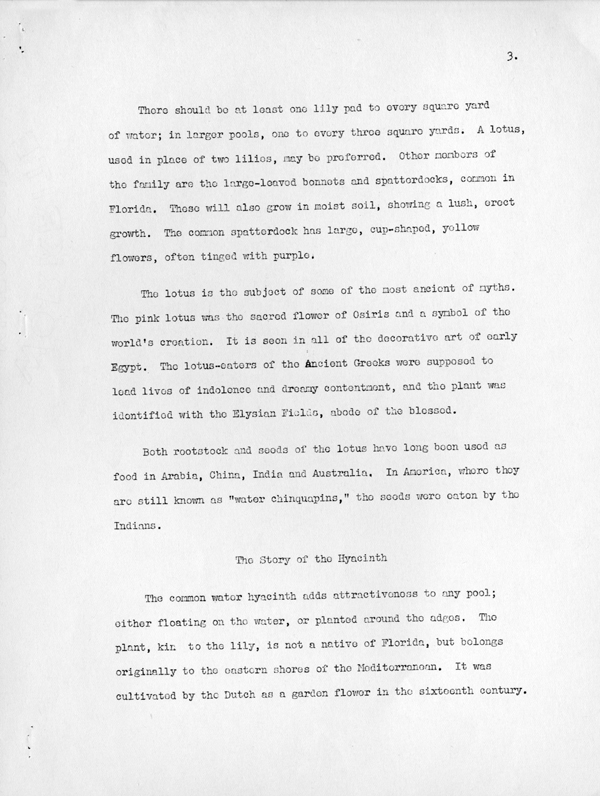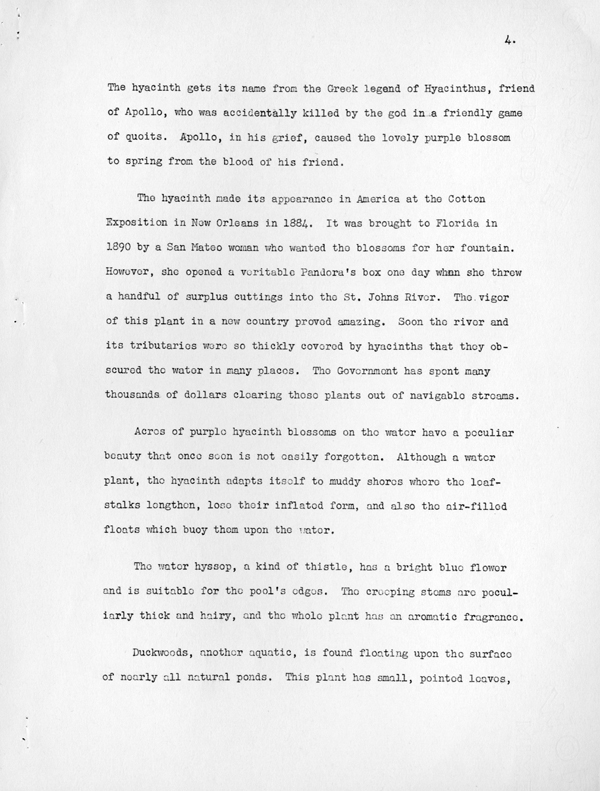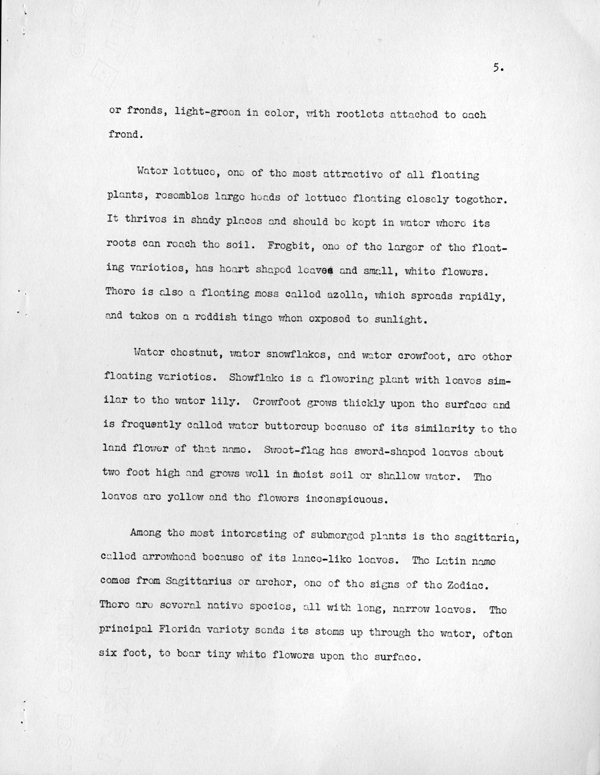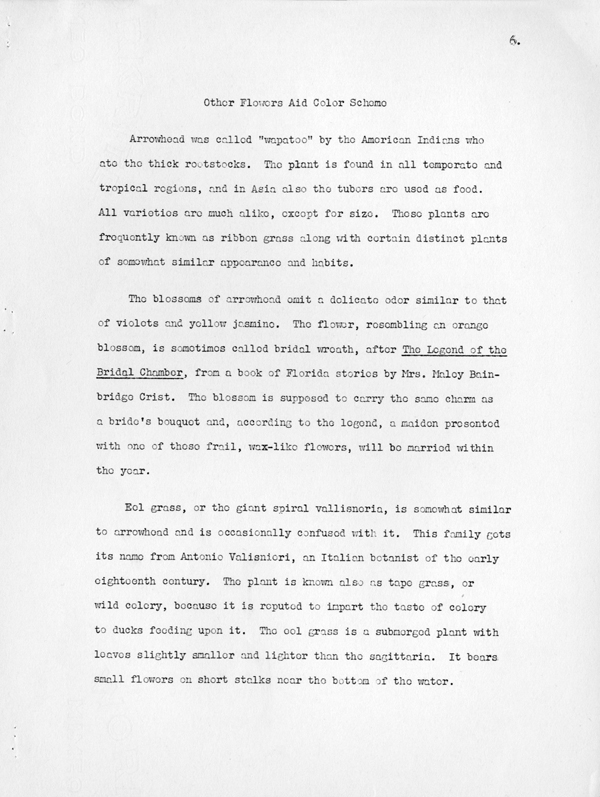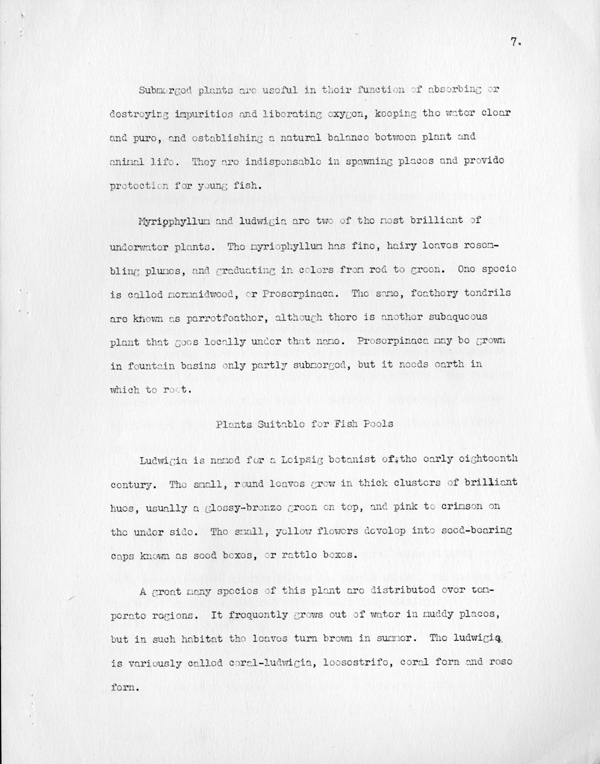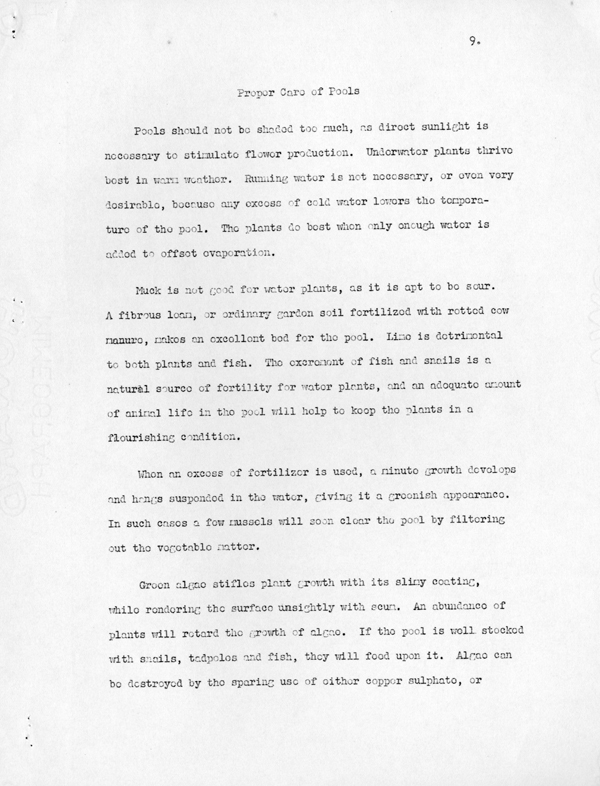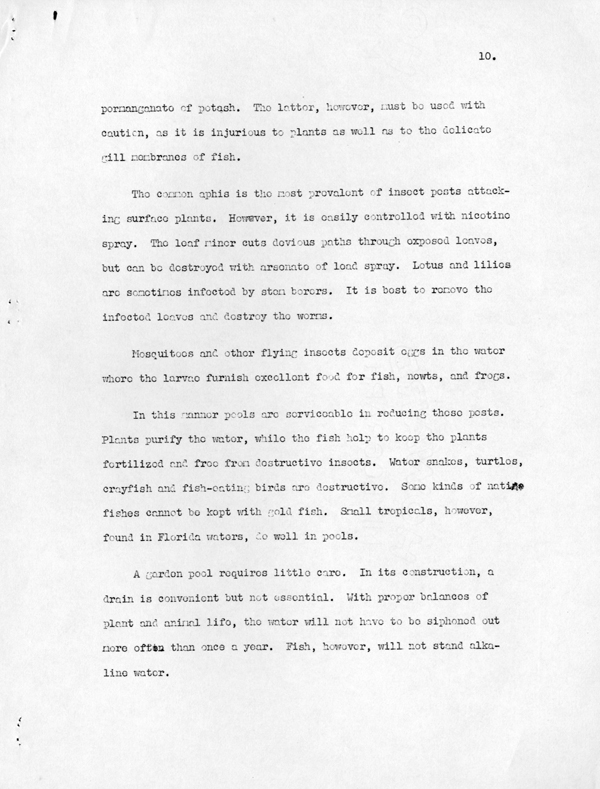Florida Memory is administered by the Florida Department of State, Division of Library and Information Services, Bureau of Archives and Records Management. The digitized records on Florida Memory come from the collections of the State Archives of Florida and the special collections of the State Library of Florida.

State Archives of Florida
- ArchivesFlorida.com
- State Archives Online Catalog
- ArchivesFlorida.com
- ArchivesFlorida.com
State Library of Florida
Related Sites
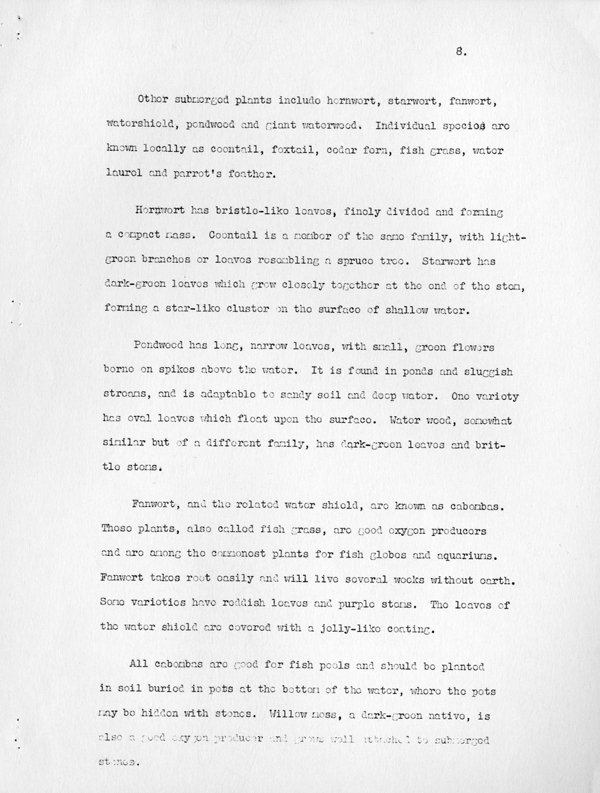
Description of previous item
Description of next item

Title
Published Date
[page 8]
Other submerged plants include hornwort, starwort, fanwort,
watershield, pondweed and giant waterweed. Individual species are
known locally as coontail, foxtail, cedar form, fish grass, water laurel and
parrot's feather.
Hornwort has bristle-like leaves, finely divided and forming a
compact mass. Coontail is a member of the same family, with light-green
branches or leaves resembling a spruce tree. Starwort has dark-green leaves
which grow closely together at the end of the stem, forming a star-like cluster
on the surface of shallow water.
Pondweed has long, narrow leaves, with small, green flowers borne
on spikes above the water. It is found in ponds and sluggish streams, and is
adaptable to sandy soil and deep water. One variety has oval leaves which
float upon the surface. Water weed, somewhat similar but of a different
family, has dark-green leaves and brittle stems.
Fanwort, and the related water shield, are known as cabombas. These
plants, also called fish grass, are good oxygen producers and are among the
commonest plants for fish globes and aquariums. Fanwort takes root easily and
will live several weeks without earth. Some varieties have reddish leaves and
purple stems. The leaves of the water shield are covered with a jelly-like coating.
All cabombas are good for fish pools and should be planted in soil
buried in pots at the bottom of the water, where the pots may be hidden with
stones. Willow moss, a dark-green native, is also a good oxygen producer and
grows well attached to submerged stones.
Title
Subject
Description
Source
Date
Contributor
Format
Language
Type
Identifier
Published Date
Image URL
Thumbnail
Transcript Path
Image Path
Image Path - Large
Chicago Manual of Style
Native Pools of Florida. 1940. State Archives of Florida, Florida Memory. <https://www.floridamemory.com/items/show/181528>, accessed 14 December 2025.
MLA
Native Pools of Florida. 1940. State Archives of Florida, Florida Memory. Accessed 14 Dec. 2025.<https://www.floridamemory.com/items/show/181528>
AP Style Photo Citation

 Listen: The Folk Program
Listen: The Folk Program
